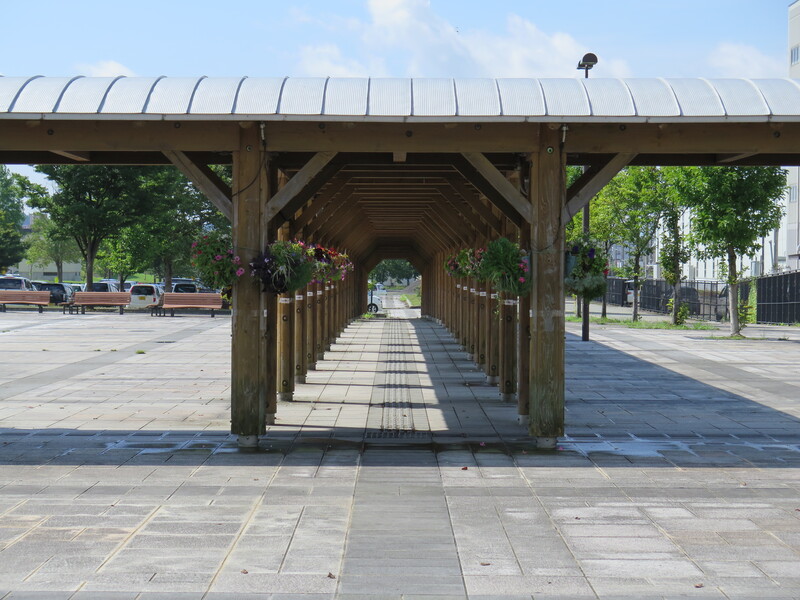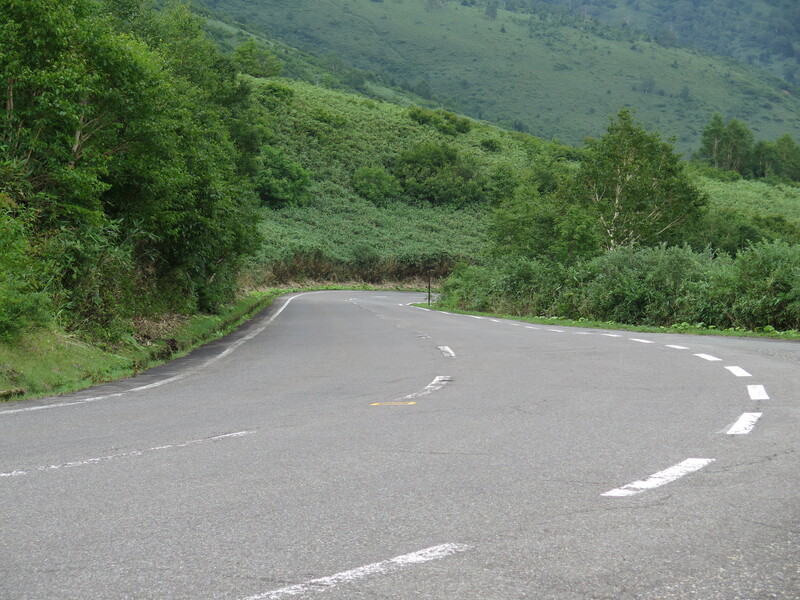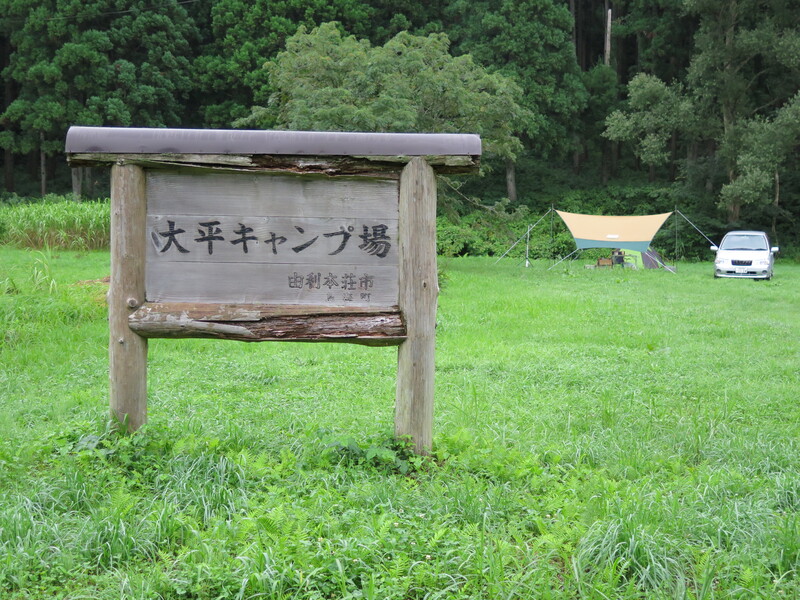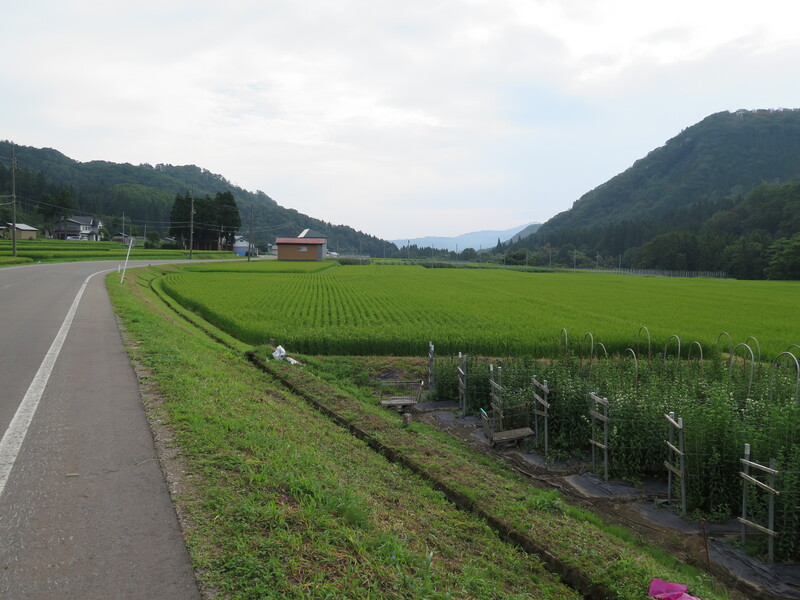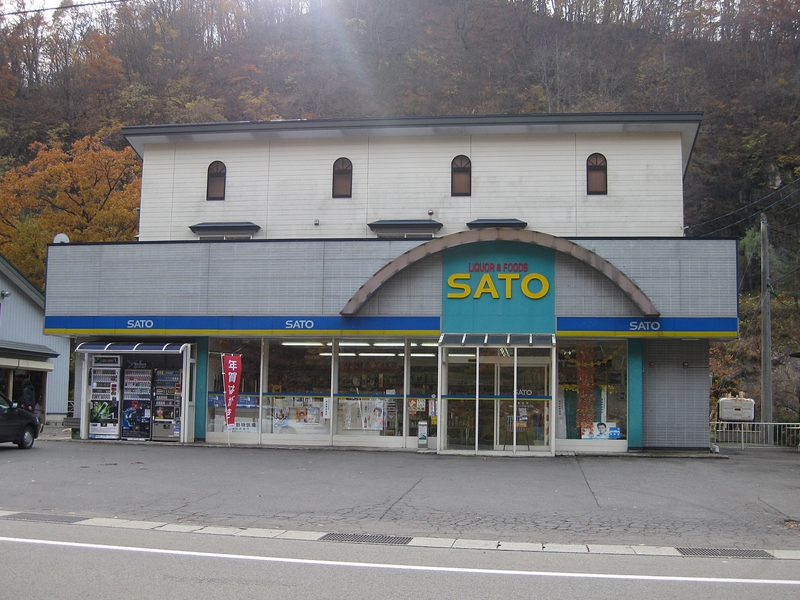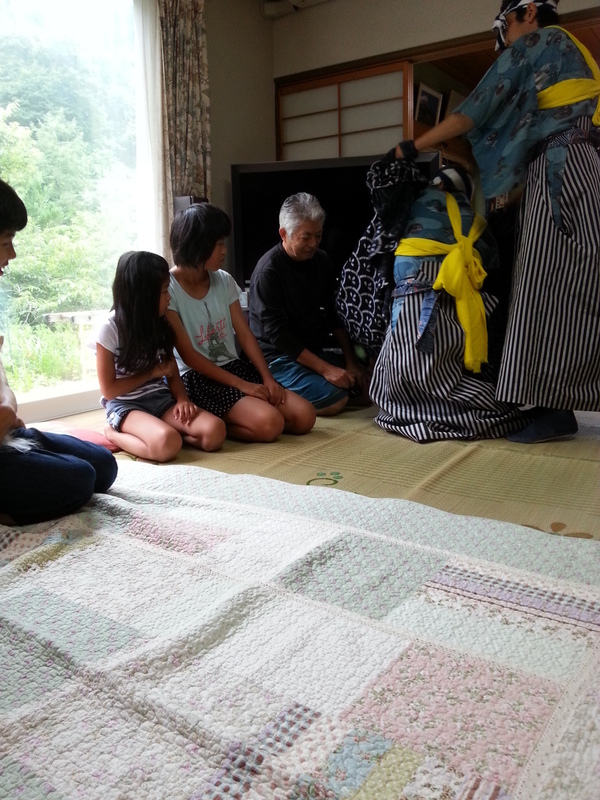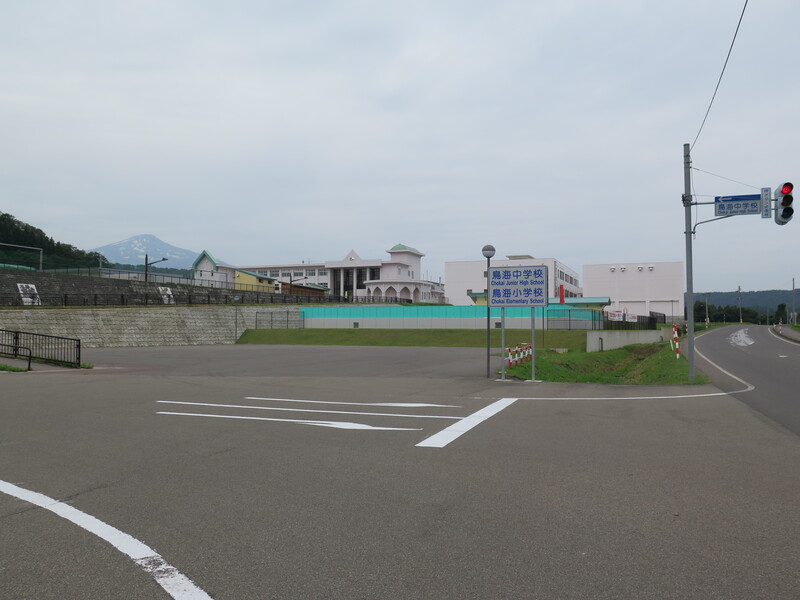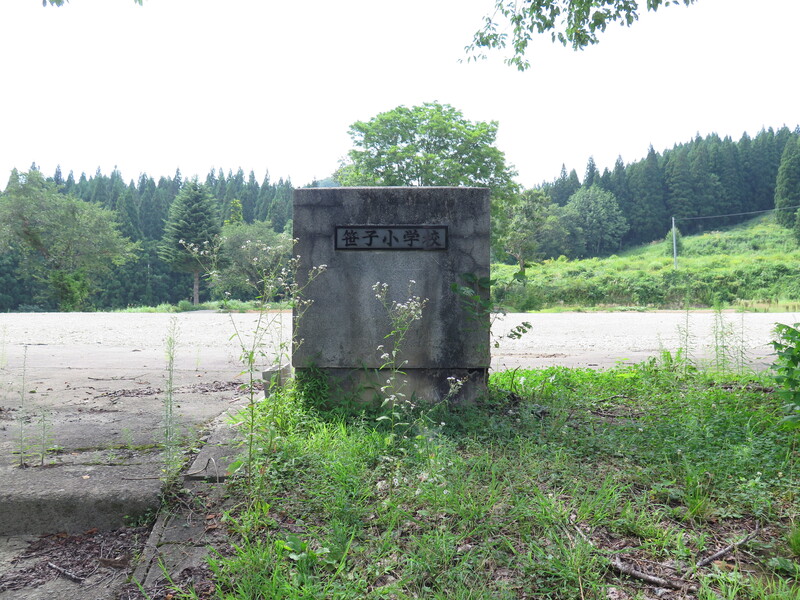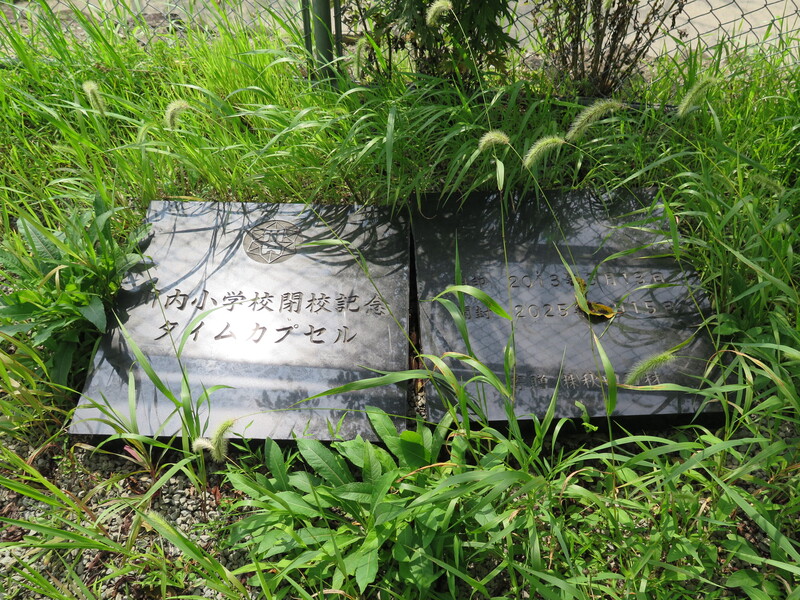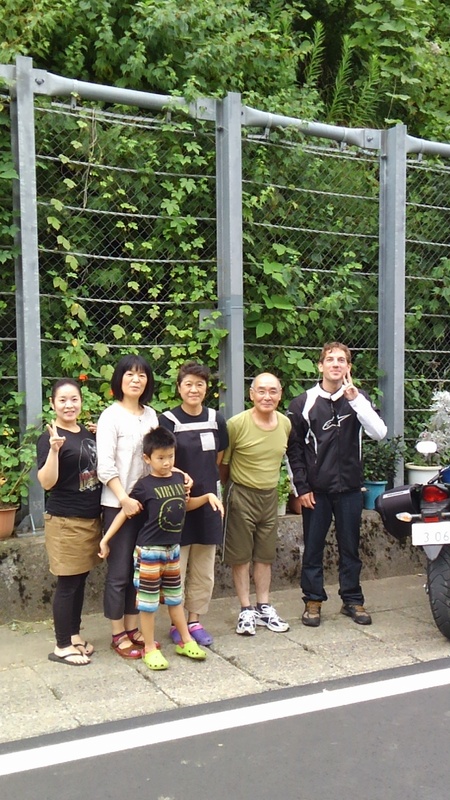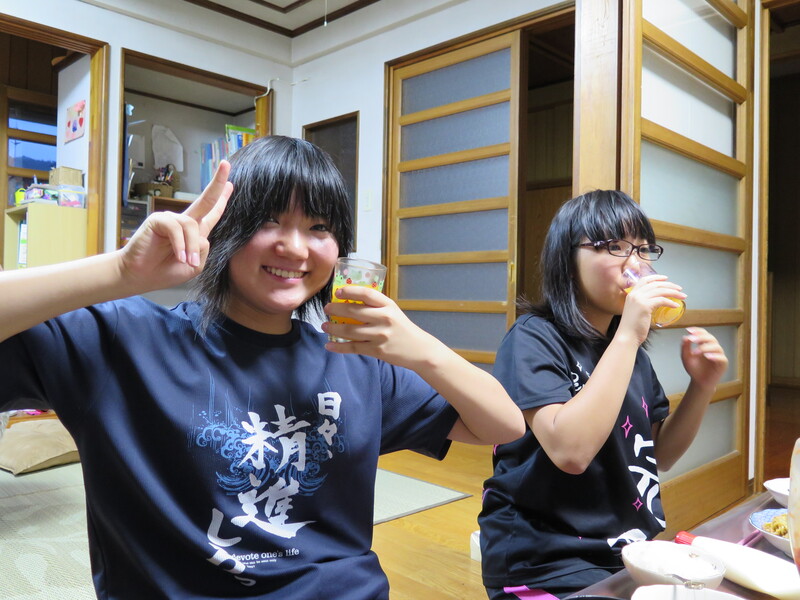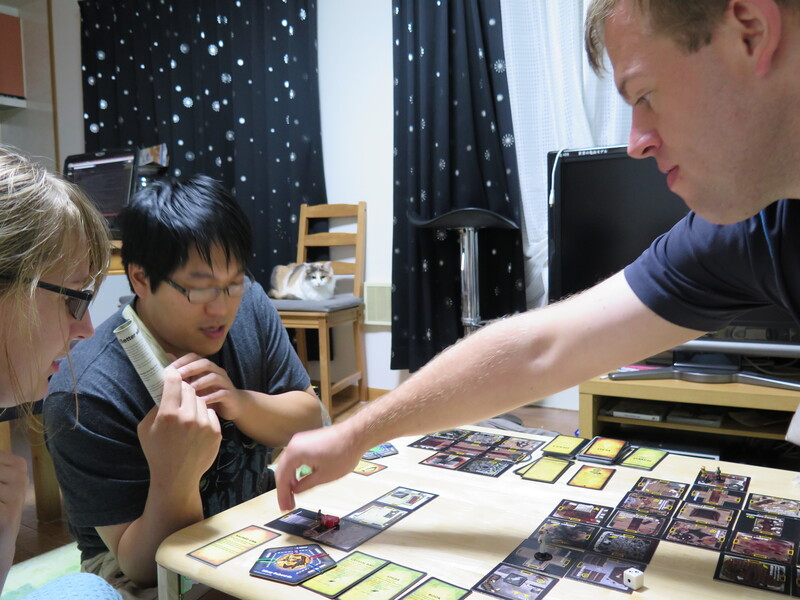Hachimantai Aspite Line
2014-08-13
The destination for today was the Hachimantai Aspite Line. It's a high elevation mountain road located in NE Akita and NW Iwate.
My route took me north through Yuzawa, Yokote, and Lake Tazawa. When I got close to the Hachimantai Aspite Line, there were no gas stations to be found. After a fifteen kilometer detour to southern Kazuno City for gas, I rode over the pass east into Iwate. This part of Tohoku is remote. In most of Japan, and even much of Tohoku, the map is dotted with small farming communities. Here, though, the elevation is high enough that the winters are harsh enough to keep the farmers away. Hachimantai's main industry is tourism: hiking, fishing, skiing, driving, and hot springs.
After going over the pass, I took the expressway south to Kitakami, west to Yokote, south to Yuzawa, and then local highways to the Ohira Campground near the Hinoto-dake trail head in Jinego. It was my plan to sleep under the covered picnic shelter there, but a family had set their tent up with the door opening onto the shelter. With my sleeping bag on a tarp under the stars, I crossed my fingers for no rain and went to sleep.
Place Names
The careful reader may note that I sometimes refer to cities with the prefix "City", such as "Kazuno City" above. Other times, I omit the trailing word, such as with the cities "Yuzawa" and "Yokote" above. The word and suffix 市 (meaning "city") is a geopolitical term which is defined by an area on a map that, by American standards, is typically the size of a county. The communities themselves, of course, existed before the introduction of this modern system, and they often used the same names. That is to say, the most populated part of Yuzawa City is a place that people call Yuzawa. The same is true of Yokote. When I use the suffix 市 (or add the extra word "City"), I'm specifically talking about the larger geopolitical area. For example, the aforementioned gas station is in Kazuno City, but it's not in the central area of Kazuno City that people would think of if you said "Kazuno". And the expressway in fact went through central Yuzawa and Yokote.
Another interesting quirk of Japanese-English translations is the way the word "river" (川) is translated. Japanese has many suffixes, and 川 — pronounced "kawa" or "gawa" in Japanese — is one of them. However, some non-Japanese speaking writers do not know this. In Akita, there is a river called the Omonogawa (雄物川). Sometimes, though, you see it described as the "Omonogawa River" as opposed to the more concise "Omono River". Other more famous rivers in Japan are sometimes similarly described. Even Mount Fuji, pronounced "Fuji-san" or "Fuji-yama" in Japanese, is sometimes called "Mount Fuji-yama" by non-Japanese speakers.
Friends and Old Students
The next day I visited old friends in Chokai. There was also time to visit Patricia, the new Chokai ALT. She's been in Japan for a week and will buy a car next week. She didn't know the trash schedule, so we asked a neighbor whose son is now a junior high school student for help. The neighbor let us take a picture of her copy of the garbage pick-up schedule and said she'd make a photocopy next week after work gets going.
The Ohira Campground (鳥海大平キャンプ場) is located in SW Jinego (39.07159, 140.23045). There's a picnic shelter, a barbeque pit, a bathroom with running water and pit toilets, and an open field where you can set up your tent. As far as I know, the only other campground in Chokai is next to Hottai Falls in Momoyake. The campground at Hottai Falls has a caretaker and you pay a fee. At Ohira Campground, there is nothing to take care of, and consequently no caretaker and no fee. It's a very quiet place. If you're into hiking, the campground is several kilometers from the trail head for Mount Hinoto (丁岳), a nice half-day hike.
The closest convenience store to teacher housing in Jinego is Conbini Sato. Some people would tell you it's not particularly convenient, because it opens at six and closes at ten, but then again, the closest twenty-four hour convenience store is the Lawson in Yashima, so I guess you take what you can get. And really, what are you planning to do in the middle of the night in Jinego?
The grandmother and grandfather, Mrs. and Mr. Sato, run the shop with the help of their daughters. Mrs. Kikuchi lives nearby and works at the shop a lot. Mrs. Kikuchi has a daughter, Himawari. The word "himawari" means "sunflower", and Himawari was my student for first through fourth grade. Then I went to Tokyo and Himawari promptly grew a foot and a half.
When I arrived at the convenience store with a mind to buy breakfast, they said that something or somebody was coming by, and wouldn't I come into the house behind the store. Not knowing what was happening, and having nothing on the schedule, I agreed, went to the house, and met the sixteen-member extended family members who were visiting for the Obon holiday. Obon is a mid-August holiday in Japan where people gather in their home towns and typically visit the graves of their parents and grandparents. The large family gatherings and copious food offerings give it a Thanksgiving-like feel.
Not long after I sat down and got a cup of coffee, a group of six men with instruments and a wooden dragon head came in. They proceeded to sing and dance in front of the family altar, and then they came around and purified each of us. The dragon, it was later explained, could eat away the bad luck lingering on our bodies. So it had to eat our arms, head, and torso. With all the bad luck gone, we can do all sorts of great things using the now relatively powerful good luck that still remains, but only for the next year until we have to do it all over again.
In April 2013, the three old elementary schools in Jinego, Kawauchi, and Hitane, merged to form Chokai Elementary School, located next to Chokai Junior High School. I've been by the new school before, but what came as a shock this time is that the old school buildings in Kawauchi and Jinego are now gone, demolished, and what's left is gravel. It makes perfect sense — after all, the old junior high schools were converted into community centers fifteen years ago when they closed, and nobody has any use for old potentially unsafe buildings. Nevertheless, when you go somewhere where your school was, and all you see is a vast expanse of openness, it makes your heart skip a beat.
The best dry cleaning in Chokai is at Maruyasu Shoten. This is not because of hastiness — dry cleaning is very slow everywhere in Chokai, because they drive it all to Honjo or Yuzawa — but instead because of excellent service. Much like at Conbini Sato, when I arrived at the store, they invited me into the house for snacks and chat time.
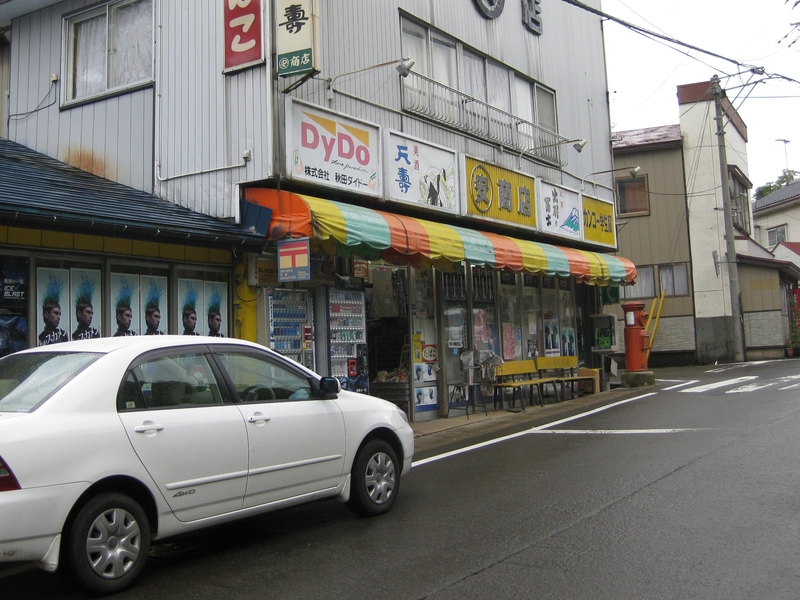
Maruyasu Shoten. Summer, 2010.
Maruyasu Shoten is run by Mr. and Mrs. Sato and Mrs. Sato's sister. Mr. and Mrs. Sato have three daughters, and one of those daughters lives there with her three children, two of whom are now elementary school students. Store owners everywhere know a lot about the community. They talk to people all the time, and if they're good at their jobs, they learn who is up to what. Chatting with them for two hours in the afternoon was relaxing, and I also found out where and what some of my former students and coworkers were up to.
I met Etsuko Mitsumori my second day in Akita back in 2007. After work I was waiting for the city bus home, which is scarier than it sounds because I'd only ridden it once before, and I didn't know the name of my bus stop. She drove by in her minivan and asked in English if I was OK. I said I was, and that was that. Later, Kazunao Mitsumori was transferred to Chokai Junior High School as the maintenance man for several years, and their daughters Arisa and Chinatsu were my students. We had a big dinner and played with fireworks in the evening.
Down to Tochigi
The following morning, I stopped by Yashima Junior High School to see Mr. Ohba. We worked together for several years, and I try to keep in touch with him. Mr. Ohba is a great guy. He has a shaved head and looks like a evil movie villain, but in reality he's very friendly and knows a heck of a lot. This guy even knows the word "MILF". How did that come to pass? For lunch I went to Sakae Shokudo. The old man with bad hearing who is the co-owner and cook told me he used to ride a Harley, some forty-five years ago when he still lived in Tokyo. It was only after he got married to his wife, who manages the shop with him, that he moved north to Yashima. After lunch I headed south to visit David and Jon in Tochigi.
Riding in the rain is a very static experience. If you have the wrong gear, you'll get wet and cold and you'd better bail before you get in an accident. My gear was sufficient, though: a rain suit, neoprene gloves, waterproof shoes, and a pair of gaiters. You ride in the rain and if your gear is good, you don't get cold. But you can't go very fast, or you risk sliding out on sharp corners. As usual, even a minor accident on a motorcycle means a great deal of badness, and nobody wants that. So you take the corners slowly. Your visibility is diminished by the rain, and there are no views. The normal parts of riding are mostly gone. Though you move at reasonable speeds, there's no real cornering happening, and the lack of visibility means any natural beauty is diminished. If you're lucky, you're on a road with little traffic and houses built next to the highway. If you're lucky, your road has little ironwork bridges crossing over small streams weaving through farmers' fields. I saw and enjoyed some of that for the first hour of the trip. For the remainder of the afternoon, though, there was nothing interesting happening. I rode for an hour, felt sleepy, stopped for a short nap at a rest area and continued on. After another two hours, I ran low on gas and filled up at the next gas station. After another hour, I stopped at a convenience store for a Diet Coke and a chocolate chip cookie, but they were sold out of chocolate chip cookies and instead I had a doughnut. It tasted OK. That's what riding in the rain is like.
In the evening, the rain stopped and the sun set. On dark curvy mountain roads, I made my way from Yonezawa to Aizuwakamatsu, and then down Highway 118 followed by a brief spell on Highway 289 and then Highway 290 from the mountains down past an expensive hot springs resort village and through some rice fields to David's place in Kuroiso.
Nasushiobara
The next day it was raining, but that stopped and I walked to the nearby Sora Cafe for coffee and cake.
think of nothing things,
think of wind.
何でもないことだけを考えよう
風のことを考えよう
— Sora Cafe website
In the afternoon, I walked over to Jon and KK's. They were playing a D&D-style game where the characters were cats and their quest was to ... rescue some pets? ... from a ... veterinarian's office or animal shelter? ... where a ... robot or mutant? ... was putting chips in the animals' heads. It seems they partly succeeded, but partly failed, and they set the building on fire at the end, killing the janitor who was taking a nap but scaring the evil robot or mutant off. The DM was Amanda, who moved back to Canada in April and was video chatting with us. Eventually the campaign ended. We went to an Indian restaurant where the water tasted like dish detergent. Later we went back to Jon and KK's and played board games and video games until late at night. Jon doesn't much like being photographed, but I snapped off a few group shots. He tolerates group shots. The cat, Yenny, has no problem with pictures, but Yenny kept sniffing the camera lens and half of my cat pictures turned out blurry.
Overnight to Tokyo
The return trip was a midnight assault on the Tohoku Expressway followed by a quick jaunt down the Tokyo Gaikan Expressway, then some putzing along local roads back to my apartment. Including a gas stop, two convenience store stops, and a lengthy coffee break, it took under four hours. That's fast!
There only one road to L.A. — U.S. Intertate 15, a straight-run with no backroads or alternate routes, just a flat-out high-speed burn through Baker and Barstow and Berdoo and then on the Hollywood Freeway straight into frantic oblivion: safetly, obscurity, just another freak in the Freak Kingdom.
— Hunter S. Thompson, Fear and Loathing in Las Vegas (1971)
The ending odometer reads 8287 km, for a trip total of 1571 km. Up from Tokyo to Tohoku, through eight prefectures, down three famous motorcycle roads plus a dozen others that were just as nice, a stop by my old convenience store where a dragon ate the bad luck from my head and arms and torso, and then a day off in Nasushiobara for board games and mediocre Indian food before going back home. Next week I gotta get the oil changed.

